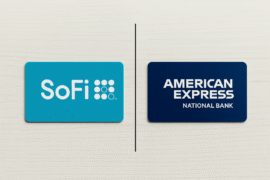This article may contain references to products or services from one or more of our advertisers or partners. We may receive compensation when you click on links to those products or services. Nonetheless, our opinions are our own.
The information presented in this article is accurate to the best of our knowledge at the time of publication. However, information is subject to change, and no guarantees are made about the continued accuracy or completeness of this content after its publication date.
Investors looking to save can choose between mutual funds and Portfolio Management Services. Many do not know the differences or the risks and benefits. This article explains both.
What is PMS?
Portfolio Management Services offer customised solutions based on the investor’s goals, time horizon and risk appetite. The objective is to maximise returns. There are two types of PMS.
- PMS Discretionary: The portfolio manager makes all investment decisions for the client. This includes stock selection, bond selection, and investment timing.
- Non-Discretionary Portfolio Management Services: The portfolio manager makes suggestions, but the client makes the final investment decision.
In India, most PMS products are optional.
Types of Mutual Funds
Mutual Funds can be classified based on asset class, structure and type.
- Asset Class: Mutual Funds can be classified as equity, debt or hybrid funds.
- Structure: These funds are classified into closed-ended and open-ended funds. There are index funds that mimic existing indices, such as Nifty50 and fund-of-funds.
Before you invest in PMS
- Risk Tolerance – PMS are more risky than mutual funds. Investors must assess the risks related to inflation, interest rates and the market.
- Expenses: PMS investments have costs like accounting and custody fees, brokerage, exit charges, performance/profit-sharing fees and management fees.
- Investment Goal: Ensure the provider’s investment strategy matches yours.
- Portfolio manager’s experience: When evaluating a PMS, check the portfolio manager’s expertise.
Before you invest in mutual funds
- Risk Appetite Mutual funds can be classified into four categories: Low, Moderately Low, Moderately High and High. Before you choose a mutual fund, assess your risk tolerance.
- Expense ratio: This is the fee charged by the asset management company for managing and distributing the mutual fund. A lower expense ratio is generally associated with higher returns.
- Historical Performance: Check the performance history of the mutual fund to understand its performance under different market conditions.
- Assets Under Management: AUM is the total value of assets managed by the mutual fund.
Which is better: PMS or Mutual Funds?
Mutual Funds and Portfolio Management Services allow you to invest in the stock market.
- Mutual Funds (MFs): Good for investors with lower investment amounts and fewer compliance requirements.
- PMS: PMS is more customised and suitable for those with higher investment amounts looking for tailored solutions. It offers flexibility and can give better returns but has higher taxes and fees. Your investment corpus and your goals and objectives will determine which PMS or MF is best for you. If you want a customised portfolio and have a big corpus then PMS may be better. If you want simplicity and have a small corpus then MFs may be better.
What’s your choice?
The choice between Portfolio Management Services and Mutual Funds depends on your personal investment goals, risk tolerance and financial capacity. Both have their advantages and are designed for different types of investors.
Mutual Funds are for investors who want a simple way of investing with lower initial investment and minimal involvement in day-to-day activities. Mutual funds come in many forms: equity, debt, liquid, hybrid and hybrid-liquid. Investors can choose a mutual fund that matches their financial goals and risk appetite. Investors can easily understand the costs as the fees and expense ratio of mutual funds are transparent. Mutual funds are also accessible to a more significant number of investors as they have lower investment minimums.
Portfolio Management Services (PMS) is a more personalised way of investing and hence is suitable for investors who have a more significant portfolio but want customised solutions. PMS offers customised strategies based on the individual’s investment goals and risk profile. This can give higher returns through strategic asset management. The higher costs of PMS like management and performance fees, should be carefully considered. The minimum investment threshold is higher for PMS, which makes it less accessible to the average investor.
Bottomline
The choice between PMS or MF should be based on your financial goals, investment amount and desired level of involvement. PMS may be better if you want a customised approach and have a significant corpus. Mutual funds are good if you want a hands-off approach and lower amounts. You decide by assessing your needs, evaluating each and comparing.

Reviewed and edited by Albert Fang.
See a typo or want to suggest an edit/revision to the content? Use the contact us form to provide feedback.
At FangWallet, we value editorial integrity and open collaboration in curating quality content for readers to enjoy. Much appreciated for the assist.
Did you like our article and find it insightful? We encourage sharing the article link with family and friends to benefit as well - better yet, sharing on social media. Thank you for the support! 🍉
Article Title: PMS vs Mutual Funds – How to Choose the Best Investment Strategy for Your Goals
https://fangwallet.com/2024/10/01/pms-vs-mutual-funds-how-to-choose-the-best-investment-strategy-for-your-goals/The FangWallet Promise
FangWallet is an editorially independent resource - founded on breaking down challenging financial concepts for anyone to understand since 2014. While we adhere to editorial integrity, note that this post may contain references to products from our partners.
The FangWallet promise is always to have your best interest in mind and be transparent and honest about the financial picture.
Become an Insider

Subscribe to get a free daily budget planner printable to help get your money on track!
Make passive money the right way. No spam.
Editorial Disclaimer: The editorial content on this page is not provided by any of the companies mentioned. The opinions expressed here are the author's alone.
The content of this website is for informational purposes only and does not represent investment advice, or an offer or solicitation to buy or sell any security, investment, or product. Investors are encouraged to do their own due diligence, and, if necessary, consult professional advising before making any investment decisions. Investing involves a high degree of risk, and financial losses may occur including the potential loss of principal.
Source Citation References:
+ Inspo












































